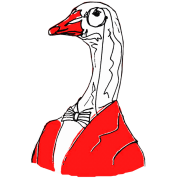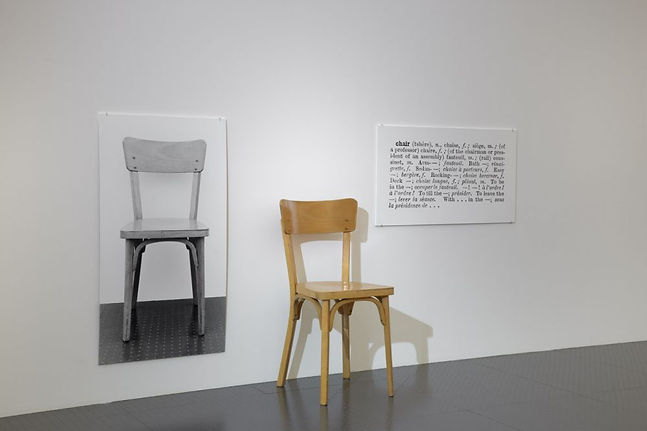“Hope is soonest found among the comfortless” – Theodor Adorno, Minima Moralia
Everyone starts somewhere
All great artists learn how to write, paint, or sing before they go on to master their given medium. Part of this process will inevitably include leaning form those that have come before them often through imitation; Hunter S. Thompson claimed to have copied out the entirety of The Great Gatsby in order to master the idiosyncrasies of Fitzgerald’s poetic style. If he had not done so Fear and the Loathing may not have been the literary tour de force it is today. Harold Pinter openly admitted that his early “comedy of menace” plays were directed inspired by the works of Franz Kafka. Would he be a Nobel prize winning playwright if he had sought to replace the Kafka’s tragicomedy on stage? Student artists, poets, playwrights, still mastering their craft should therefore be no stranger to imitating their artistic heroes. Their works will always be indebted to someone.
If music be the food of love, go on a diet.
In a recent review of a new song from a student band in Palatinate proclaimed the following:
“X are certainly a band to keep any eye out for in the music industry with their uniqueness and ability to push the boundaries of what songwriting is.”
The words imply that the song in question is the musical equivalent of Duchamp’s Fountain ready to shatter the conception of music itself and usher in a new paradigm of musical endeavour. I am no musicologist, nor am I musically literate but even I can tell that the song is imitating another. The track is a medley of garbled sound that could have been extrapolated from the CD selection of a mid-noughties’ angst-ridden teenager who has read too much Nietzsche. Echoes of The Libertines and a bunch of other forgettable bands that marked the paradigm with a faux “fuck Thatcher” attitude. Someone has not told them that she has been dead for years. The band (whose name has been anonymised for the sake of not ruffling any feathers or riling any egos) are one of many student “creatives” whose vocabulary consists of repetitive forms, styles, and concepts. Perhaps they are just forging their craft. Everyone has to start somewhere. But this excuse cannot be wheeled out for all cases, for there is a fine line between this and resting on artistic laurels, imitating not to develop their own voice but merely to steal other’s ideas to privilege appearance over reality.
Poetic injustice: a Platonic interlude
The relationship between imitation and the philosophy of art has been strained since Plato. Although his worries were metaphysical in nature, they nonetheless contain nuggets of interest to the present discussion. Plato held that all knowledge derived from Forms, the essential version of any thing that exist in their own imperceptible world. The most human human being. The most goatly goat. All physical objects are imperfect instantiations of forms. The red on the apple is not the reddest red, but nonetheless contains an aspect of red. Art enters the equation given that artists are able to separate appearance from reality. Plato’s example is that of a table which exists in an image, in reality, and as a Form. The artist had the ability to depict the table but without the tableness that makes it a table; I cannot rest a coffee cup on it given that it is merely an image. The artist’s copy is therefore further away from the perfect Form than the physical version of the table therefore making it worse. Plato’s aesthetics (if it can be called that) rests on a unity of values. What is true is beautiful, is good. The true table the real table is good and is beautiful. The false table, the imitation, the illusion is bad. Plato’s discussion of Homer exemplifies this argument. In the way that the artist can depict a table without the tableness, Epic poems like the Iliad can depict values like bravery, honour and duty in the context of warfare without the corresponding reality behind them. The illusion of war, not the reality and all the horrors of the phenomenal experience of it. When the reality behind such ideas is castrated, their appearances are all that remain leaving them vulnerable for misuse and propaganda.
Plato’s argument is dated. If we reject his framework, the Forms and the unity of the value spheres we can discard the theory and its distrust of artists. Would we then be throwing the baby out with the bathwater? In opposition, Kantian aesthetics demarcates the beautiful from the good. His theory came to dominate western conceptions of art right into the 20th century with Clement Greenberg. This does not mean we can disavow Plato completely. The great writer/philosopher Iris Murdoch revisited Platonic thinking in her essays on the Sovereignty of Good and The Fire and the Sun reuniting the value spheres whilst granting art a significant role in our moral lives.
Baiting, hating, imitating
Plato’s relevance could be seen in the world of student theatre. The world of thespians is already rife with corruption in a moral sense with its slippery power structures and surreptitious dealings. What about the metaphysics? Whilst much drama occurs offstage hardly any seems to happen on stage given that an alarming number of theatrical offerings do nothing to innovate and are content to repeat what has come before them whilst operating under the mask of the new. They are akin to Frankenstein’s monster; parts of this work and that play exhumed from their artistic graves, hacked and slashed together to create an ungodly mishmash of styles and ideas. Like the monster, the final product is not quite real, both familiar and unfamiliar (unheimlich to use Freud’s terminology) and is never quite able to exist on its own. One play performed last year shamefully stole, moment for moment, a choreographed sequence from a production of the same play (at another more prestigious venue) a year earlier. The trailer for the original production is, unluckily for them, readily available on YouTube. But nobody in the theatre knew this. To them, someone else’s creative prowess had been stolen by the creative team and passed off as their own. Appearance separated from reality. Plato would be rolling in his grave.
This is a curious phenomenon; directing a play would presumably entail that the creative team have something to say of their own.
The typical image of a suffering artist who cannot help but stive to communicate their malaise through their given medium springs to mind. Why would a genuine artist condone regurgitation?
Adverts that do not advertise
The root cause of this is the privileging of the “aesthetic.” This term, bastardised beyond comprehension from its original meaning referring to the philosophy of art, is uttered by feckless Instagram influencers and students prone to staining their walls with copious amounts of fairy lights. It is an almost meaningless term: “make it look aesthetic” simply refers to producing a certain look with a je ne sais quoi that deems it worthy of being exhibited*. This mentality has begun to swallow the art world and has dangerous implications: instead of striving to forge an artwork that has value in and of itself, directors, writers and artists can simply imitate the “aesthetic”, borrow the appearance without the reality and garner all the praise of the real thing without doing the hard lifting that is being creative. Imitation is necessary, but it can easily be over relied on in the name of laziness and ego-baiting. “as long as it looks good” is the adopted motto of far too many.
The fact that some shows at Durham are turned around in a mere three weeks is evidence buttressing this hypothesis. Similar length show at the National Theatre rehearse for three months.
There is no blood on my hands, they are just naturally red
This issue also rears its ugly head in the world of student film. One film, released not too long ago and shall also remain unnamed, was nothing but visual pastiche of artists like David Fincher or Rodger Deakins. The irony here was that whilst the film makers who are heralded as gods in the wide eyes of students who are drunk with desperation to enter the industry tell intriguing stories; their worshipers sacrifice narrative in the name of the aesthetic, to impress viewers who will be easily wowed with shmaltzy camerawork, gimmicks and expensive drone shots that do more to unearth privilege than anything else. The result in the case of this student offering gave the final product the aura of an advert despite not advertising anything. Throwing money and expensive cameras at people is easy. Crafting a tight woven narrative is hard. How can an advert that does not advertise anything be an advert? How can there be art when there is no creativity or craft?
Contemporary spectres
Social media is the spectre that haunts our generation. Despite our attempts to exorcise it, it lingers, furnishing the background of our interactions surreptitiously dictating the way we behave. The fact that we scroll on various apps, often for hours, and for minuscule amounts of time exacerbates the privileging of the aesthetic. We supposedly devote a mere seven seconds to pictures, two minutes to articles or writing, and only listen to the first few bars of a song before we swipe down deeper into the depths of algorithms, posts, and code. Therefore, the priority has to be what is immediately experienced. Whatever we engage in has to impress in the first moments of its engagement. For visual media that means adopting and adhering to previously establish gradients of quality, privileging the “aesthetic” – the tried and tested formula. A more challenging work that changes the apperception of our tastes simply demands too much within seven seconds. It must be tossed aside because it is boring. Therefore to be an artist whose work is engaged in, appearance is everything. Reality, the underlying meaning of the work where creativity and craft reside, and almost entirely dissolved.
Unseen trees fall in forests. Unseen art falls into the virtual void
Social media has another malign impact on art in the privileging of the aesthetic. In what is more or less duping others into believing that they are the originators of a creative vision, the “artist” (or artists in the case of the aforementioned play) will be recognised as an artist. Much has been written on social media and identity. It is unconventional to explore how Facebook, Instagram, and Snapchat (the unholy trinity of social media) allow us to curate ourselves as if we were galleries, presenting highly tailored snippets into what appears to be our lives. We only see the result of tailoring, never the process itself. Will this picture match my “aesthetic?” To appear sociable, I only have to take an image of myself at a club. To appear diligent, I have to post an image of a pile of books in the library. To appear cultivated I must share a painting. It does not even have to be one I like. I do not even have to like anything.
Hegelian theory of recognition: we are ourselves as seen through the eyes of others.
This is an oversimplification of Hegel’s theory of recognition which I do not have room to fully delve into. The essential feature is this: I am a certain person only if I know to be seen as that person I the eyes of others. The obvious course of action is to act in such a way (the good man is one who does good deeds. He only knows he is good when people revere him as good, when people ask for his advice and smile at him). My identity is intersubjective. We can take John Donne at his word (no “man” is an island). The relevance of this should become clear: social media takes the weight off our shoulders. I no longer have to do thing itself to project appearance of its undertaking onto the Other, I merely have to appear to be seen to be doing it, something that social media does only too well given its emphasis on appearance and shunning of reality. Murdoch express a similar sentiment in the following:
Murdoch: “man creates an image for himself then comes to resemble that image”
Seven seconds is more than enough. The student artist only needs to post a few images of their work, a picture they copied from somewhere else, a mere segment of a film, an image of them wielding a guitar, and suddenly the image, bereft of any truth, is a reality in the eyes of others, and thus in the eyes of the “artists” themselves. This compromises the very definition of artistry. There no longer needs to be genuine creativity. Only its vestiges that can be stolen from elsewhere thereby mudding any reality that genuine art aims to express. They create an image for themselves. Then, through the eyes of others, come to resemble that image.
A light joke to calm the tension:
A man walks into a psychoanalyst’s office claiming to be a cat. After a number of sessions, he is cured and no longer believes himself to be a feline. He leaves the office into the real world but after ten minutes returns and says to his psychoanalyst: “but what if they don’t know I’m not a cat?”
(This was supposedly Jacques Lacan’s favourite joke).
We can imagine a long-haired Dr Martens wearing vintage cloth clad humanities student claiming a similar sentiment: “what if they don’t know I’m an artist?”
Imitation is a dangerous tool to wield. Granted, it is a wonderful thing to further engage in one’s adoration for an artist by choosing to learn from them, by painting like them, writing like them, seeing the world through their eyes. It is also often a necessary way to improve one’s skill as an artist. But it can also harm the very idea of art and creativity itself when misused in the name of egoism. We must remember to always strive for something real, a truth. Many philosophers have equated art to some form of truth; for Heidegger it was the truth of a subjective world. For Murdoch it was truth of the human condition. Theodor Adorno wrote that “art is magic delivered from the lie of being truth.” There are some seriously talented creatives at Durham. I have seen some fascinating artworks and eagerly await to see the where the creative paths lead to for certain individuals. They must never allow themselves to become complacent, and must always strive to create art, not fake it.
*this definition is deliberately circular to highlight how bizarre the use of the term is.
Postscript
Student arts criticism as evidence to the thesis – The fact that student “creatives” often shun criticism suggests that they cannot separate themselves from the artefacts they create. This is because the art literally allows themselves to become the image they wish to adopt. Critique of the art is therefore no different to critique of the individual. Criticism is criticism of the actual person. The critics’ hands are therefore tied: “we don’t want to be mean so we cannot critique at all.” This is why the majority of student reviews make the subjects of their reviews out to be God’s gift to mankind. A reality check is needed.
Performative Contradiction – When the journal in which this article is published, it will be strewn across social media, paraded like some pagan human pawn to be sacrificed in exchange for a bountiful harvest. On the one hand this is done to promote the journal. It will not be printed, it cannot be handed out on street corners or sold in newsagents. It makes sense to promote it online. Its editors want you to read it. Social media marketing is a ubiquitous feature of being online, where even the smallest venture into the virtual realm is confronted with a barrage of advertising. The question is this: how you will perceive the people who share this? Who contribute to this? What becomes of the “creatives” in your eyes?
Addendum: what do you think of me, the author of this, these words here. What am I to you? What aspects (be they authentic or disingenuous) have I shown to the world? What do you think I am?
Mirrors ought to think before they reflect – Critics are not popular people. Then again if we were in the business of making friends, we would not have allowed ourselves to become what we are.
Unwanted guests at endless dinner parties – Pessimists ought to hate being right.
Damian Hirst, Desmond Tutu, and Amber Herd – I am not finishing my degree. My degree is finishing me.
My dream – the ultimate embodiment of the prioritisation of the aesthetic is Rupi Kaur. There is nothing beyond the words, they are an effortless compilation of simulacra, nothing but appearance, nothing but “vanity and vexation of spirit.” Too lazy to read the words? Are seven seconds too strenuous for you? Just look at the kitschy drawing instead. The only value her “poetry” would provide would be if one might read her entire oeuvre ironically. This would make her work parody, a criticism of the vacuousness of the “aesthetic” mentality and of a society that only gives attention to images. I hereby declare Milk and Honey to be post-modern masterpiece.
Alexander Cohen
Against Imitation: the Limits of Student Creativity



